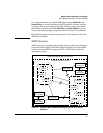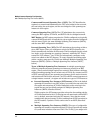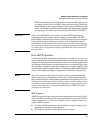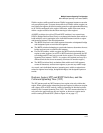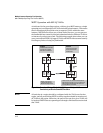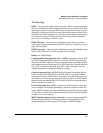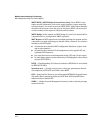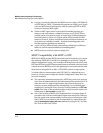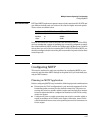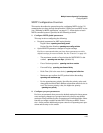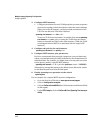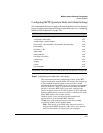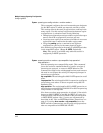
4-15
Multiple Instance Spanning-Tree Operation
802.1s Multiple Spanning Tree Protocol (MSTP)
Operating Rules
■ All switches in a region must be configured with the same set of VLANs,
as well as the same MST configuration name and MST configuration
number.
■ Within a region, a VLAN can be allocated to either a single MSTI or to the
region’s IST instance.
■ All switches in a region must have the same VID-to-MST instance assign-
ment.
■ There is one root MST switch per configured MST instance.
■ Because boundary ports provide the VLAN connectivity between regions,
all boundary ports on a region's root switch should be configured as
members of all static VLANs defined in the region.
■ There is one root switch for the Common and Internal Spanning Tree
(CIST). At any given time, all switches in the network will use the per-port
hello-time parameter assignments configured on the CIST root switch.
■ Where multiple MST regions exist in a network, there is only one active,
physical communication path between any two regions, or between an
MST region and an STP or RSTP switch. MSTP blocks any other physical
paths as long as the currently active path remains in service.
■ Within a network, an MST region appears as a virtual RSTP bridge to other
spanning tree entities (other MST regions, and any switches running
802.1D or 802.1w spanning-tree protocols).
■ Within an MSTI, there is one physical communication path between any
two nodes, regardless of how many VLANs belong to the MSTI. Within an
IST instance, there is also one spanning tree across all VLANs belonging
to the IST instance.
■ An MSTI comprises a unique set of VLANs and forms a single spanning-
tree instance within the region to which it belongs.
■ A dynamic VLAN learned by GVRP will always be placed in the IST
instance and cannot be moved to any configured MST instance.
Starting in software release 13.x.x, dynamically learned GVRP VLANs can
be mapped to MSTIs and support MSTP load balancing.
■ You can preconfigure static and dynamic VLAN ID-to-MSTI mappings
before the VLAN is created on the switch. Later, when the static VLAN ID
is configured or a dynamic GVRP VLAN is learned, the VLAN is automat-
ically associated with the preconfigured MSTI. For more information,
refer to the spanning-tree instance vlan command description on page
4-36.
■ Communication between MST regions uses a single spanning tree.



